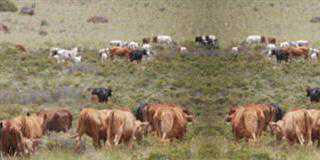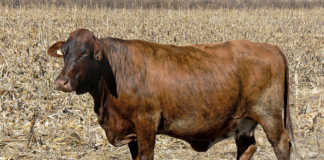An “undegradable” food protein is one that microorganisms can’t break down to get at the nitrogen they need to grow. But this undegradable protein can pass through the duodenum and be digested enzymatically. To work out the protein content of any foodstuff, you need to multiply its nitrogen content by 6,25. For example, urea’s nitrogen value is 46%.
Multiply this by 6,25 and the potential protein value for ruminants is 287,5%. Urea is widely used in ruminant rations, licks, and so forth, but in limited quantities, as the ammonia it contains can be very toxic if overfed. Measuring what percentage of protein is undegradable by a cow is simple.
A very fine nylon bag is filled with a measured quantity of a specific protein source with a known protein level. It’s then inserted into the rumen through a fistula (a surgically created passageway). Microorganisms enter the bag, degrade the protein and use the nitrogen, leaving behind the portion they can’t manage.
After 48 hours, the bag is retrieved and its content analysed.Maize gluten meal, with a protein value of 48%, was placed into the rumen in this way. After the bag had been retrieved, its protein value was measured at 30%. So, the degradable part of the meal was 18%. Its undegradable protein value of 62% could then pass straight into the duodenum. Urea on the other hand, is 100% degradable!
Feed cost and energy value
When we discuss feed cost at a later stage, we’ll examine the merits of various ingredients. Different feedstuffs have different undegradable protein values, but I won’t explain the possible discrepancies (see table: Approximate protein value of some protein sources).
Calculating feed’s energy value is a nightmare! Attempts to measure feed’s energy values and what the cow actually absorbs go back a long time. It started off with measuring total digestible nutrients, then metabolisable energy, then nett energy (NE) and now recently, NE lactation. Our egos won’t let us admit that we actually don’t know, and are just extrapolating from too many sources.
In my 40-plus years of experience with energy requirements, I’ve left it to the cow to tell me if she’s getting enough energy, through her condition and milk protein content and by examining her dung. We’ll examine observations and performance based on dietary input and the protein/energy relationship later.
E-mail Malcolm Stewart-Burger at [email protected].













